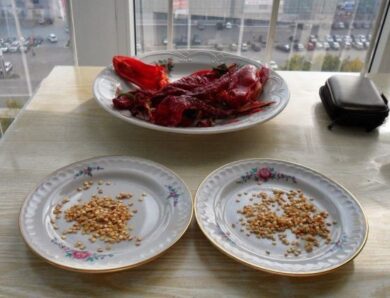
Diseases of melons: reasons, symptoms and methods of control
Many melons, in particular in melons, there is a tendency to be affected by various diseases. Melon diseases are divided by type of pathogen: viruses, bacteria, fungi. And to know the difference between these types of diseases is not only the fate of specialists in microbiological laboratories, but also ordinary gardeners. Once you learn to make the correct diagnosis, fighting them will not be so costly, because you will be able to carry out the correct and effective treatment. Diseases and pests of melons will not affect the quality and quantity of the crop, if you know their basic features, methods of prevention and treatment. And the question: why they turn yellow, twisted leaves of seedlings, why worms appear in melons and rust on stems, after reading the article will no longer put you in a dead end.
False powdery mildew
Peronosporosis (false powdery mildew) Is a disease caused by a fungus, which is characterized by the appearance of yellow-green spots on melon leaves. Spotting and rust is manifested in the early stages of plant development and progresses rapidly. Later, a gray plaque appears on the leaves of the melon - a sign of sporulation of the fungus.
What shall I do, so that the false powdery mildew does not have time to appear on the melon?
Methods of prevention of downy mildew include heating the seeds in a thermos for a long time 2 hours at a temperature of 45 degrees and their 20-minute treatment in a 1 percent solution of manganese.
If the disease still caught up with the plant, and rapidly yellowing leaves, use a solution of urea and Bordeaux mixture. Then you can use drugs such as "Topaz" and "oksihom", with dosage, indicated on the package.
A martyr (floury) Dew
This is the most common disease of melons, about the symptoms of which you just need to know. If small white spots appear on the stems and leaves of melons - it's time to sound the alarm. The active phase of powdery mildew should not be allowed, when twisting, dry leaves, and sometimes even become dark brown.
Every gardener has heard something about the rules of crop rotation. Adherence to them is the best prevention of diseases - even powdery mildew is not afraid of your seedlings.
What to do, if the melon could not be protected from this disease? Powdery mildew is a rapidly developing disease, so after you find the first spots, don't delay, and treat the plant with a sulfur solution.
Melon garden is prohibited from processing 3 weeks before harvest.
Fusarium wilt
Fusarium wilt is another fungal disease, which is manifested in melons of medium and late ripening. It can manifest, when the seedlings of everything 2-3 true leaves or at the time of fruit ripening. Melon leaves wither, turn yellow, covered with gray rust. In a week the plant may die completely, and if with the help of chemicals melon managed to save, the fruits will no longer be so sweet and juicy, and the harvest will be reduced several times.
As in the case of powdery mildew, the best method of precaution is proper crop rotation. Fungal diseases develop in the soil, therefore, planting melons in place of their close relatives, wilting is inevitable.
If the symptoms of fusarium wilt still appeared, use phosphate or potassium supplements.
Anthracnose
Anthracnose, popularly known as "copper". In this disease, yellow or pink-brown, rusty spots cover the leaves, which later become brittle and dry up. Fruits are also deformed and rot.
Anthracnose can be prevented by completely getting rid of plant debris at the landing site. Anthracnose is treated with Bordeaux fluid and sulfur solution. Measures should be taken at the first signs of the disease.
Root rot
Affects the weakest plants. Their roots and stems are covered with rust, they turn brown. After that, the cotyledons and leaves dry up - the plant dies. Disinfect the seeds in formalin before planting, you will protect the melon from root rot.
Video "Increasing melon yield"
In this video you will learn about it, how to increase the yield of melons.







